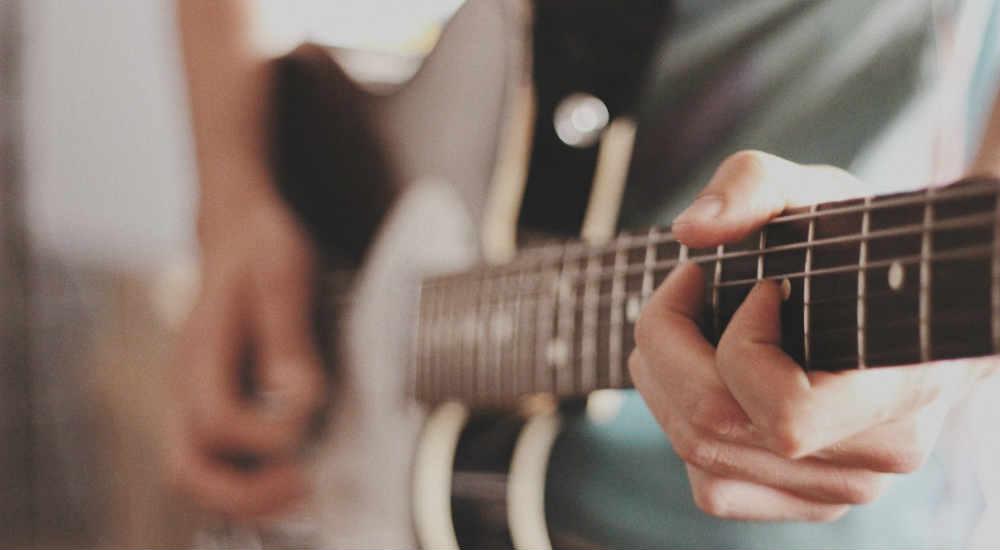Let’s revisit the C Minor Blues in Figure A below.
You’ll notice the V chord (G7) only figures for two bars (in this version) out of the entire progression. Yes, the chances are that you can get away with C Minor Pentatonic over them and might not hit a Bb in those bars anyway. But being aware of those bars and having some more scales/licks in your arsenal can add some great flavours, especially in the last bar of the progression to set up some tension before it cycles back to the start (the I chord, C Minor). What can we use though? There are lots of options, but today we’ll take a quick look at the Altered Scale.
Figure B shows two octaves of the G Altered scale. The fingering might require some slides or shifts but is still fairly compact. This shape is a good starting point to get used to the position and sound of the scale. It might seem quite dark and dissonant to your ear at first, which is totally normal.
Coming from the Ab Melodic Minor scale, the G Altered Scale is G-Ab-Bb-B-Db-Eb-F. Notice that it has the B natural, which works nicely on the V chord (G7) but also has an Ab (b9), Db (b5) and Eb/D# (#5). These notes can be used to create tension alongside the chord tones of G-B-F. Once you’ve got a handle on the scale, let’s move on to some licks. Figure C works with the last bar of the Minor 12 Bar Blues, starting on the root of G7 (G) and moving up through Ab and Bb before travelling back down in 16th notes finishing on the 7th (F) and finally resolving to G (the 5th of Cm), which would be the start of Bar 1 again.
Figure D also tackles the last bar of the Minor Blues. By using the b9 (Ab), #5 (Eb) we can again create tension which resolves in the last note of the phrase (G). Players from Robben Ford to Mark Lettieri to Wes Montgomery use these Altered Scale ideas. It can be a strong sound and when used sparingly (such as the one or two bars in the Minor Blues) you can play the scale very literally as a starting point and it still sounds good.











